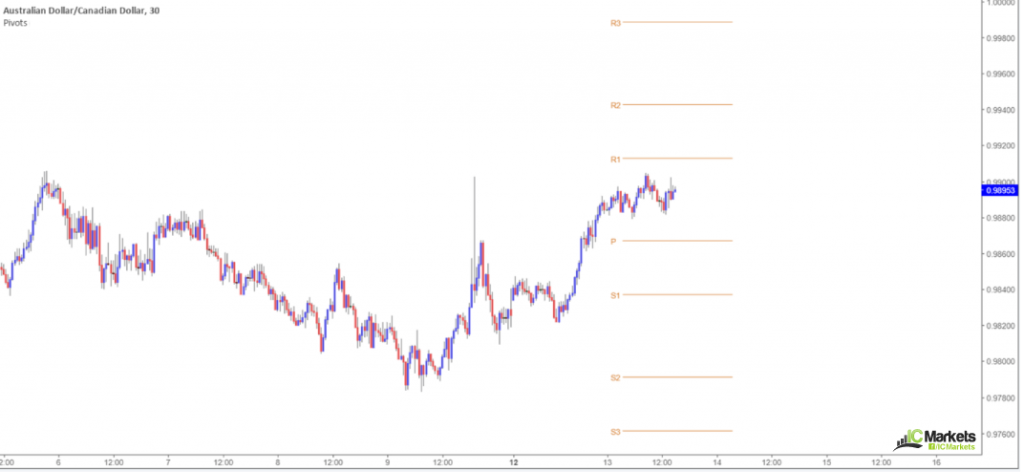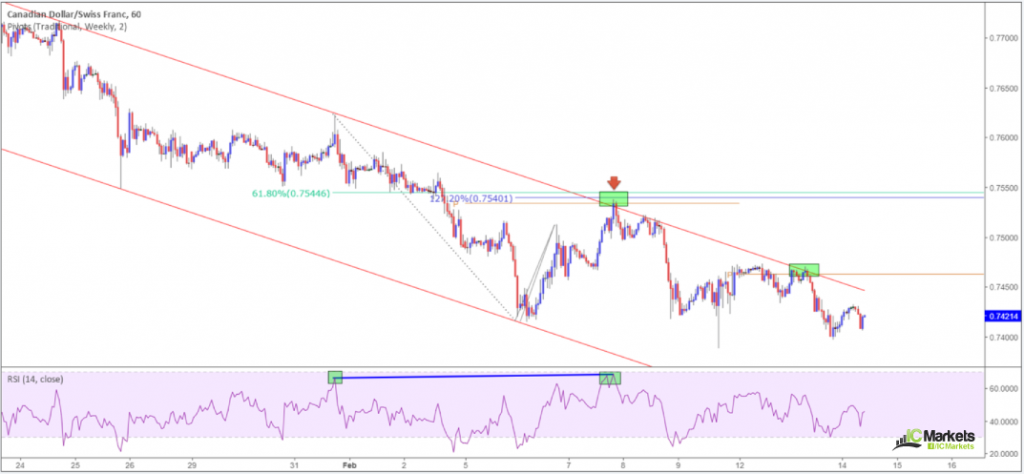Updated March 2020
To say support and resistance (S/R) is significant is an understatement.
Without knowledge of S/R, the odds of success, particularly for technical-based traders, significantly diminishes.
The good news is S/R comes in all shapes and sizes; some are even calculated for you. Much like psychological numbers, or round numbers, pivot point levels are objective. In other words, levels not influenced by personal opinion.
Initially employed by pit traders on the floors of equity and futures exchanges, pivot point levels have, for most technicians, proven valuable in the currency markets.
How Pivot Points are Displayed
FIGURE 1.1
The arrangement, as shown in figure 1.1, consists of seven levels:
- The ‘P’ represents the pivot point.
- R1, 2 and 3 are corresponding resistances.
- S1, 2 and 3 are corresponding supports.
Suitable for daily (as in figure 1.1), weekly, monthly and yearly format, just about any trader can find use in this tool. For example, intraday traders will likely employ daily pivot point levels, while swing traders’ focus will likely shift more towards weekly or monthly pivot point levels.
Different Pivot Points
While most favour the standard/classic method of calculating pivot points (like the one depicted in figure 1.1), other calculation techniques are also used, such as Camarilla pivot points, Fibonacci pivot points, Woodie pivot points and DeMark pivot points.
To calculate Standard, Camarilla and Fibonacci pivot points, the previous period’s high, low and close prices are necessary. For Woodie pivot points you need the previous period’s high and low prices, as well as the open price for the current period; for DeMark pivot points, however, the previous period’s open, high, low and close prices are needed.
There are additional calculations to generate the corresponding support and resistances. Luckily though, most platforms calculate the process so you can focus on what’s important: trading the markets.
Another point to consider is the effect market closing times have on calculations. You must select a session close – typically traders hone in on the 5pm New York close.
Using Pivot Points
Like most technical tools, even those based on objective calculations, trusting one metric is unlikely to yield positive results. When price converges at a point in which multiple technical tools come together, this is where high-probability trading setups occur – points of confluence.
Points of confluence are, from a technical standpoint, the Holy Grail. Including pivot point calculations within your trading confluence toolbox is, therefore, an option.
Figure 1.2 is an example of confluence at work:
FIGURE 1.2
Figure 1.2 is a detailed setup, offering a good example of confluence. The following tools merge around the 0.7540ish area, representing a strong reversal zone for sellers (upper green box):
- H1 descending channel resistance.
- A H1 61.8% Fibonacci resistance at 0.7544.
- A H1 127.2% Fibonacci extension point at 0.7540.
- A weekly pivot point (granted, for some traders the pivot (P) isn’t considered S/R, rather a mid-point with which the corresponding S/R levels are calculated).
- The relative strength index (RSI) nearing its overbought value and showing divergence.
That’s five reasons to sell the Canadian dollar.
While pivot points combine well within areas of confluence, other traders also use pivot point levels as breakout triggers. Similar to traditional S/R levels, traders enter long upon price closing above (or below in the case of shorts) a pivot point level and target the neighbouring level. A break of the R1 resistance level has the R2 level to target, for example. Conservative traders may opt to wait for a retest of the broken R1 level as support before pulling the trigger; some may also want additional candlestick confirmation to accompany the retest.
Another way of integrating pivot points into your trading is using them as a measure of market sentiment. Traditional interpretation involves observing the pivot point. If price trades above the pivot point level, it’s a sign traders are bullish. Conversely, trading south of the pivot point level indicates a bearish vibe.
Worthy of Attention
While pivot points are a notable tool, it should not take priority over market structure. Market structure is price action: supply and demand, support and resistance, trendlines, channels and so on. Once you have a feel for structure, you can look at confirming the areas with additional tools, such as pivot point levels. In other words, pivot point levels should be viewed as secondary confirmation tools.
Take-Away Points:
- Pivot points are horizontal support and resistance lines, calculated directly on the platform’s chart.
- Pivot points can be traded in the same way as traditional S/R levels, and also used to determine market sentiment.
- Pivot points, combined with other tools, offer high-probability reversal zones. Used alone, the odds of a reaction is diminished.
- Each corresponding S/R is calculated from the main pivot point. This is done for you on the majority of platforms.
- Levels above the main pivot points are resistances; levels below are supports.






